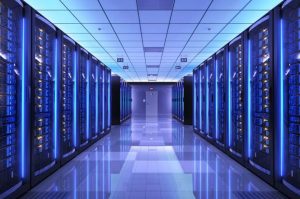Computer Appreciation For Beginners (Part 2)
3 min read[ad_1]
In this part of the article ‘Part 2’, I intend to focus on the classification of computer. It is of great important to know of the classification a particular computer system belongs, as this will help in clear differentiation among them when come across.
Classification of Computer:
In this section, we give the classification of computers by the type of data they process, Purpose and Physical Size.
Classification by Data Process:
Digital Computers:
The digital computers convert all input data into binary form; process the data in binary form but the processed information is converted back to decimal form. The output from digital computers are usually discrete values. Digital computers are very accurate; examples include desk calculators, some personal computers and adding machines. Most business applications use digital computers.
Analogue Computers:
Analogue computers represent data in continuous form using physical quantities. Their accuracy depends upon the measurement made, and so not as accurate as the digital computers. These types of computers are used for scientific or engineering purposes. Examples include petrol pumps, speedometers, voltammeters and all such instruments.
Hybrid Computer:
Hybrid computers combine the best features of analogue and digital computers. Using digitizers, hybrid computers accept analogue inputs and output digital values. They are used in highly scientific environments. The hybrid has the speed of the analogue and the accuracy of the digital computers.
Classification by Purpose
Using this basis, the two major classes are explained below:
Special Purpose Computers:
These are computers designed to carry out specific tasks. They have in-built programs, which are stored in a part of the main memory called Read Only Memory (ROM). The content of this type of memory can be accessed and executed by the computer but cannot be modified by the user. Examples are computers designed for use in digital watches.
General Purpose Computers:
These are computers that are not specifically designed or built for specific jobs. They solve various kinds of problems depending on the program or software loaded into them. Their main memory is typically, Random Access Memory (RAM). Example of these type of computers are found in business, commercial and scientific environment.
Classification by Physical Size:
Microcomputer: Microcomputer is at the lowest end of the computer range in terms of speed and storage capacity. Its CPU is a microprocessor. The first microprocessors were built of 8-bit microprocessor chips. The most common application of personal computers (PC) is in this category. The PC supports a number of input and output devices. Examples of microcomputers are IBM PC, PC-AT etc.
Mini Computer: This is design to support more than one user at a time. It possesses large storage capacity and operates at a higher speed. The mini computer is used in multi-user system in which various users can work at the same time. This type of computer is generally use for processing large volume of data in an organization. They are also use as servers in Local Area Networks (LAN).
Mainframes: These types of computers are generally 32-bit microprocessors. They operate at very high speed, have very large storage capacity and can handle the workload of many users. They are generally use in centralized databases. They are also use as controlling nodes in Wide Area Networks (WAN). Examples are DEC, ICL and IBM 3000 series.
Supercomputer: They are the fastest and most expensive machines. They have high processing speed compared to other computers. They have also multiprocessing technique. One of the ways in which supercomputers are built is by interconnecting hundreds of microprocessors. Supercomputers are mainly being used for weather forecasting, biomedical research, remote sensing, aircraft design and other areas of science and technology. Examples are CRAY YMP, CRAY2, NEC SX-3, CRAY XMP and PARAM from India.




